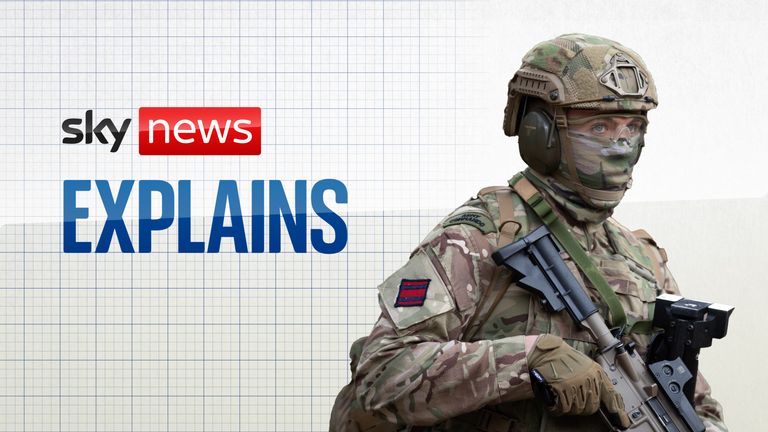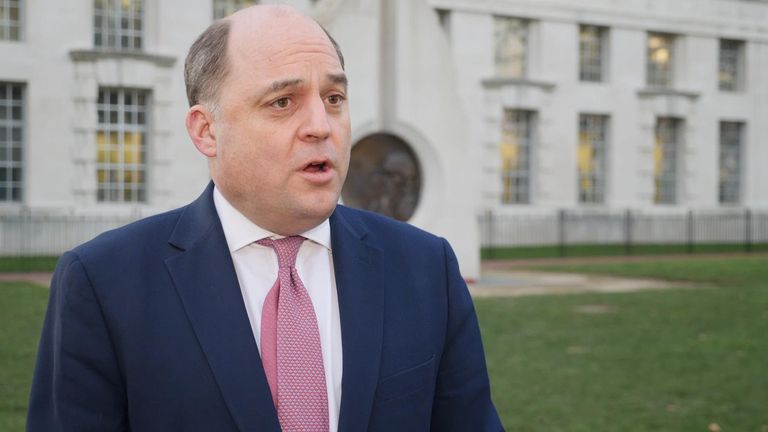Why spectre of British military becoming a ‘hollow force’ is now a reality | UK News
When considering national defence budgets, what matters is not simply how much is spent but what that money actually buys in terms of armed forces size and fighting strength.
The UK will typically bat off even the best-informed criticism of its eroding military prowess by trotting out lines on how Britain is the biggest European defence spender in NATO and – according to some measurements – has the fifth-largest defence budget in the world.
This may, for now, be true – though it won’t be for much longer if no new cash is found for the military and Germany and France overtake – but it does not equate necessarily to value for money or to credible capability.
The Ministry of Defence has a dismal track record of procuring weapons and equipment, from aircraft carriers and fast jets to boots and lightbulbs, with billions of pounds spent and – at times very little to show for it, in particular when it comes to the army’s armoured vehicles.
Countless attempts have been made to improve the process, with some successes.
There are examples of the military resisting the desire to chase an exquisite, bespoke piece of kit that will cost more and take longer to make over something that is not quite as gold-plated but works and can be delivered within the desired timeframe.
Yet it still takes around nine months simply for a business case to be approved by ministers and the Treasury – let alone implemented.
It means that the around £46bn annual budget does not go as far as it should, leaving the armed forces less capable.
At the same time, since the end of the Cold War, successive governments have chosen to cut the British Army, Royal Navy and Royal Air Force and divert money into other priorities, such as health, welfare and paying down the national debt.
This has often led to already chaotic equipment programmes being delayed to save cash in the short term – only for the cost of the project to increase over the longer run, or for the whole thing to be cancelled.
It has also meant that the size and strength of the armed forces have shrunk.
Read more:
What is the current state of the British armed forces?
British Army has ‘fallen behind’ and ‘needs investment’
Yet the UK, as a nuclear-armed power, a permanent member of the United Nations Security Council, a member of the G7 and a leading state in NATO, has attempted to avoid reducing its global ambitions to project power and influence.
This worked in the initial years after 1991 as Britain’s military was shrinking from a position of significant mass and firepower.
But for the past decade, the spectre of what defence experts call the “hollow force” – a military that lacks the manpower, weapons, training and stockpiles to be effective – has loomed large and is now a reality.
It will be a surprise to no one inside defence that a senior US general has told Ben Wallace, the defence secretary, that the British Army is no longer regarded as a tier one force and is barely tier two, alongside the likes of Germany, Italy and Belgium.
What Prime Minister Rishi Sunak needs to decide is whether he is comfortable with that, in which case he must reduce his ambitions for the UK’s role in the world, including in Ukraine.
Or whether he wants to retain his country’s position of relative strength, able to defend itself and its allies. In which case, he will need to spend more on defence immediately before attempting over time to secure better value for money from the expanded budget.

